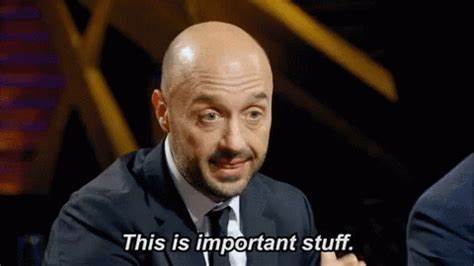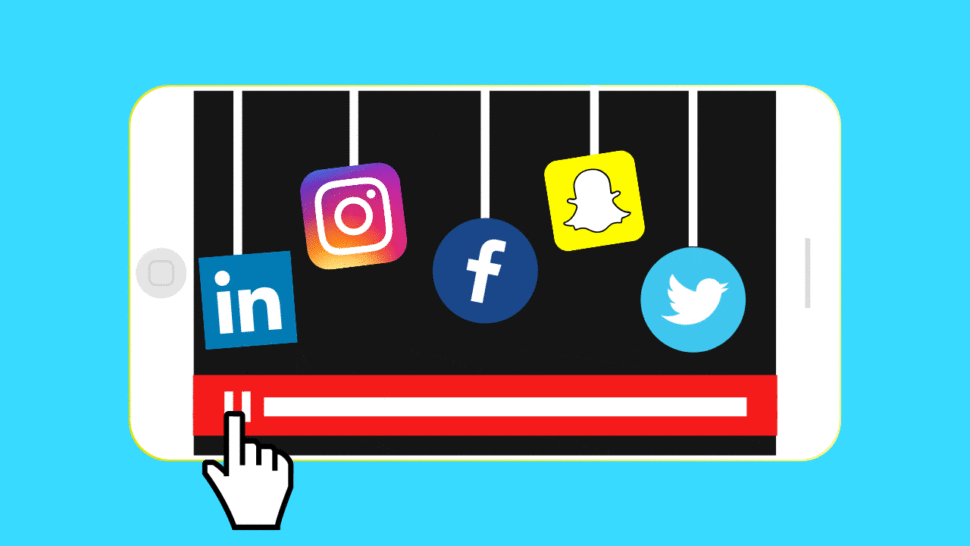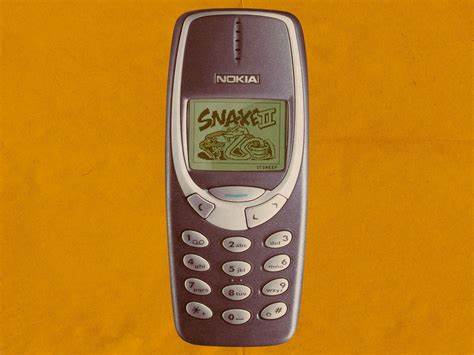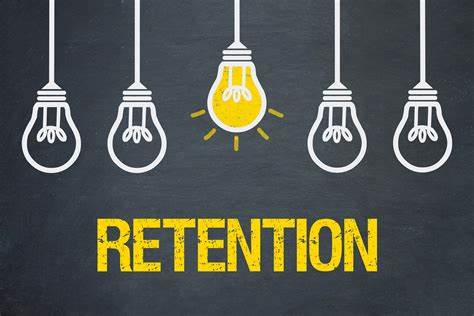As the old proverb goes; give a man a customer and he’ll make one sale. Teach a man top quality customer retention strategies and he’ll have a lifetime of sales. I may be paraphrasing a tiny bit, but it’s not too far off.
The bottom line is this: everyone wants customers to return. But it’s not always a given. In fact, 77% of customers would recommend a company to a friend after just one positive experience, but it takes 12 positive customer experiences to make up for one negative one.

So how do you keep customers coming back for more? And what sends them running that you should avoid at all costs? Keep reading to find out!
What is Customer Retention?
Simply put, customer retention refers to the strategies and actions a business undertakes to retain its existing customers over an extended period of time. It typically involves building long-lasting relationships with customers so that they return time and time again. While it’s usually a strategy implemented to bring in repeat purchases, it can also be utilized to increase customer loyalty and encourage ongoing engagement with your brand.
The goal of customer retention is to maximize the value of each customer by ensuring they continue to choose your products or services over your competitors’. This involves providing exceptional customer experiences, addressing their needs, and continuously delivering value even after the initial purchase. A high customer retention rate indicates that customers are satisfied, engaged, and find value in the products or services you offer.
There are several metrics to consider that fall under the umbrella of customer retention:
- Customer satisfaction
- Personalization
- Effective communication
- Loyalty programs
- Exceptional customer service
- Quality products and services
- Value-added services
- Listening and acting upon customer feedback
- Community building
While there are plenty more factors to consider when discussing customer retention, these are the most important.

But what benefits does customer retention have for your business?
Benefits of Customer Retention
Some of the benefits of customer retention will be mind-bogglingly obvious. But it’s worth laying them all out in one clear place so you can see the sheer importance of employing effective customer retention strategies.
- Increased revenue and average order value: 61% of small business owners said the majority of their revenue came from existing customers, and that repeat customers spend 67% more than new ones.
- Cost savings: Acquiring new customers can cost a lot in marketing expenses, while retaining existing customers costs less because you already have a relationship with them.
- Steady cash flow: A loyal customer base generates steady and more predictable income as opposed to new customers that can be more sporadic.
- Word-of-mouth referrals: Customers that love your brand are far more likely to recommend your products or services to friends, family members, or colleagues. Essentially, if you can make customers love your brand, they’ll do your marketing for you.
- Higher conversion rates for new products: If you’re launching a new product or service, you have a loyal customer base that’s more likely to convert than cold leads.
- Feedback for improvement: Loyal customers are more likely to provide valuable feedback – they’re the ones using your product most after all. This allows you to identify areas for improvement and create a positive feedback loop by listening to them.
- Brand loyalty: Loyal customers are less likely to ditch you for a snazzy new competitor. They’ll be more forgiving of occasional mistakes.
- Long-term growth: A host of loyal customers provides a great foundation to plan long-term business growth and sustainability.
- Emotional connection: Long-term customers often develop an emotional connection to their favorite brand, leading to higher customer satisfaction, loyalty, and advocacy.
This is all well and good, but what strategies can you implement to increase customer retention so you can get your hands on some of the benefits above?

Patience, young padawan. Here are 15 ways you can supercharge your customer retention strategies.
15 Customer Retention Strategies that Actually Work
1. Personalized Communication
One of the key ways to increase customer retention is to personalize your communication with your customers. Nobody wants to be treated like a generic, faceless blob. If your communication is personalized, it goes a long way. Even something as simple as using their actual name in emails instead of something like “customer”.
If you send personal offers based on the customer’s preferences, purchase history, and shopping behavior, you show them that you value their personal situation. Get it right and the customer will love it. Get it wrong and they’ll be turned away.
In fact, 78% of customers cite personalized communication as one of the reasons why they’d be more likely to repurchase.
2. Loyalty Programs
Loyalty programs are more important than you might think. For example, 57% of customers spend more on brands to which they are loyal. When a customer joins your loyalty program, they become more likely to repurchase and more likely to engage with your brand again in the future.
Currently 19% of loyalty program members feel special and recognized by brand representatives. That’s not a great deal, but when put side by side with the 57% of customers that spend more on brands they’re loyal to, it shows the rewards of personalizing communication and making loyal customers feel more noticed. They will spend more on your brand.

3. Exceptional Customer Service
89% of companies consider superior customer service an essential element of customer retention. By ensuring your customer service team is responsive, friendly, and helpful, you let your customers know that you genuinely care about their satisfaction.
This can be accomplished in a number of ways. One of the best is by using a voice of the customer tool like tl;dv to capture the words of your customers in a clear manner. This type of footage can be made into clips or reels and shared with your customer service team, your product team, and your sales team to ensure a streamlined process of improvement can begin.
4. Regular Engagement
Keep customers engaged by sending them relevant content such as newsletters, blog posts, or industry updates. This maintains your brand presence in their minds even when they’re not actively making purchases.
Research shows that highly engaged customers buy 90% more often and spend an average of 60% more per transaction.
5. Feedback Collection
Actively seek customer feedback and opinions. Don’t just seek it, but actually act upon it. This not only shows that you value their input but also helps you identify areas for improvement. If your loyal customers are all saying the same thing, it’s probably a big sign that they’re onto something. Your customers are clever. Give them the credit they deserve and let them have a say in how your product operates.
It’s worth noting that 77% of customers have a more favorable view of brands that ask for and accept customer feedback.
@tldv.io We love constructive criticsm #productmanager #product #tech #productmanagement #corporatehumor #startup
♬ original sound - tldv.io - AI Meeting Recorder
The best way to gather customer feedback is in person. However, that’s not always possible – especially for remote and global teams. In this case, use a remote UX research tool like tl;dv to gather insights and share them easily with stakeholders and your company’s decision makers.
6. Surprise and Delight
Who doesn’t love surprises? Maybe don’t jump up on them when they’re home alone, but dropping them an email with a free gift every now and then is never a bad idea. The gift doesn’t have to be something physical either. It could be a super exclusive offer or Limited Time Offer on Canvas Photo Prints, for your coolest customers.
This type of surprise for your customers creates a positive emotional connection and increases brand loyalty. A recent study claims that delighted customers are more likely to be retained and thus more likely to become loyal.
7. Exclusivity
Talking of exclusivity, by offering exclusive access to new products, services, or events to your repeat customers, you make them feel special and valued. It’s as if they’re part of a secret club where they are VIP members. They get an advantage over the average buyer and this can feel powerful.
Not just a great tool for offering deals, it’s also a good customer retention strategy if you want to target some particular field. For example, if you want more users to download your app, you could run mobile exclusive offers. In fact, this was the top mobile strategy marketers used in 2019.
8. Community Building
Create a sense of belonging by building a community around your brand. Ideally customers can interact, share experiences, and provide support to one another. This is a great way of getting all your returning customers in one place, too.
74.5% of customers agree that access to an online community makes them feel more valued as a customer.
9. Continuous Improvement
It should go without saying that continuous improvement is a great cornerstone for keeping customers. Nobody wants to be with a brand that’s still stuck in 2010. We’ll get onto more about those brands later, but the key is to continuously strive for a better user experience. By keeping your customer at the forefront of your business decisions, you make customers for life.
And always remember: a 5% increase in customer retention can lead to a 25-95% increase in profits.

10. Segmentation
By segmenting your customers into distinct groups based on specific characteristics, behaviors, preferences, or demographics, you can tailor your customer retention strategies more effectively. Use a sentiment analysis tool like tl;dv to accurately group your customers with the help of AI.
One example of segmentation is to offer local deals for different geographic areas. If the U.S.A is celebrating Independence Day, you’re able to target your American customers in time for July 4th. But you don’t want to be targeting your British customers with the same deal.
Another great way to segment your customers is into groups that makes it easier to retarget. For example, if someone has logged a complaint, this person could be put into a segment with other unhappy customers. This way you can try to solve their issues in your retention campaign.
11. Re-engagement Campaigns
This should be a part of any customer retention strategy. Identify inactive or dormant customers and run targeted campaigns to bring them back. Offering incentives or reminding them of the value you provide can rekindle their interest. This is worth doing as there is a 70% greater likelihood of retargeting an old customer than attracting somebody new.
12. Multi-Channel Presence
It’s important to be where your customers are. There’s no point posting all day on Facebook if your customers are on TikTok. By knowing your customers like the back of your hand, you can curate content just for them exactly where they’ll see it. Maintain a presence across various social media platforms, email, and even physical locations if applicable.
Wanna hear something crazy? Companies with omnichannel customer engagement strategies retain an average of 89% of their customers, compared to a customer retention rate of 33% for companies with weak omnichannel customer engagement.

13. Timely Follow-ups
After a purchase, follow up with customers to ensure they’re satisfied and address any concerns. This demonstrates your commitment to their satisfaction. It also makes customers feel valued, like their opinions matter. The truth is that with all these customer retention strategies, the most important thing is that you truly put the customer first and genuinely care for them. If it’s fake just to get more sales then the customer will see through you like a glass window. Cultivate an authentic customer-centric culture at work and you can’t go wrong.
Customer-centric companies are 60% more profitable than those that don’t pioritize the customer. Keep that in mind…
14. Leverage Data
The value of data isn’t up for debate. It’s the lifeblood of several of the biggest businesses in existence, including Facebook, Alphabet (Google), Amazon, and even Tesla. You can leverage your data analytics to gain insights into customer behavior, preferences, and patterns. Use this information to tailor your strategies more effectively.
Starbucks started sending games through its loyalty program as early as 2014. In 2016, however, they started to customize their games by leveraging their customer data. This increased the results of their marketing campaign by 300%. This is just one example of how leveraging customer data can be a game-changer.
Always remember that data ownership is a controversial topic. Ensure you get full permission and consent before using your customers’ data to target them more efficiently.
15. Long-Term Relationship Building
62% of customers that trust a brand are more likely to stay loyal.
Focus on building genuine, long-term relationships rather than just pursuing one-time transactions. This customer-centric approach creates trust and loyalty. By maintaining healthy relationships with your customers, you’ll not only keep them coming back year after year, but you’ll also cement your brand as the first one they recommend when talking to friends in need of a similar product.

5 Customer Retention Disasters: A Lesson on What to Avoid
Not all customer retention strategies go to plan. Sometimes unforeseen circumstances change everything, or sometimes companies get stuck in their ways and refuse to adapt with the new challenges and changes life throws their way. Here are five famous cases that forced customers to drop the brand like a bag of cold sick.
1. Nokia
Remember Nokias? They were built like bricks, could survive a drop from a skyscraper, and they were practically everyone’s first mobile phone if you were born before the year 2000. Everyone loved them. They had Snake and the Hurdy Gurdy ringtone. What wasn’t to love?
Well, when smartphones became a thing, Nokias remained dumb. In 2007, Nokia owned almost 50% of the mobile market share. Just six years later, it was down to 3%. Apple and Samsung came out with touchscreen, but Nokia remained in the past, confident that touchscreen was just going to be a fad. They became complacent and missed the importance of software in favor of hardware.
This disaster can be attributed to the fact that they ignored their customers – phone users – and trusted their own predictions while the market changed all around them. By the time they realized what to do, it was too late. The damage had been done.

2. Blockbuster
Blockbuster, once a dominant player in the video rental industry, suffered a similar fate to Nokia. They failed to adapt to changing consumer behaviors and technology. They didn’t invest enough in online streaming and digital distribution, which ultimately led to their downfall.
Compare them to Netflix, which started as a similar rental business. They pounced on the idea of online streaming and are now the undisputed king of streaming. Even though their competitors are starting to gain on them, they still have over 50% of the market share.
3. MySpace
Video killed the radio star and Facebook killed the MySpace star. MySpace failed to provide a seamless and user-friendly experience as Facebook did. The cluttered design, slow loading times, and lack of effective privacy controls led users to switch to more appealing alternatives.
They simply couldn’t keep up with their competitors.
4. Gap
While Gap is still a thing, they had an incident in 2010 where they decided to redesign their logo. It received widespread negative feedback from customers and the design community. The reaction showed that customers had a strong emotional connection to the old logo.
Listening to their customers, Gap quickly reverted to the original logo. This is a perfect example of how important it is to listen, understand, and respect customer sentiment.

5. United Airlines
In 2017, United Airlines faced a massive public relations crisis when a video showing a passenger being forcibly removed from an overbooked flight went viral. The incident highlighted the company’s poor customer service and disregard for passenger rights. The negative publicity had a detrimental effect on the airline’s reputation and customer retention.
To make up for the drama, they had to offer bigger rewards to customers. Overbooked passengers could be offered up to $10,000 in travel certificates to change flights after this event occurred. They have since regained some of their customers, but the initial impact of the event was definitely a cause for concern.
Start Retaining Your Customers
Customer retention is vital now more than ever before. A loyal customer spends more, recommends your brand more, and is more likely to choose you over your competitors. The more return customers you get, the better your business will do.
We hope you’ve learned enough customer retention strategies to start implementing them straight away. Download tl;dv for Google Meet or Zoom and start developing stronger relationships with your customers today.





